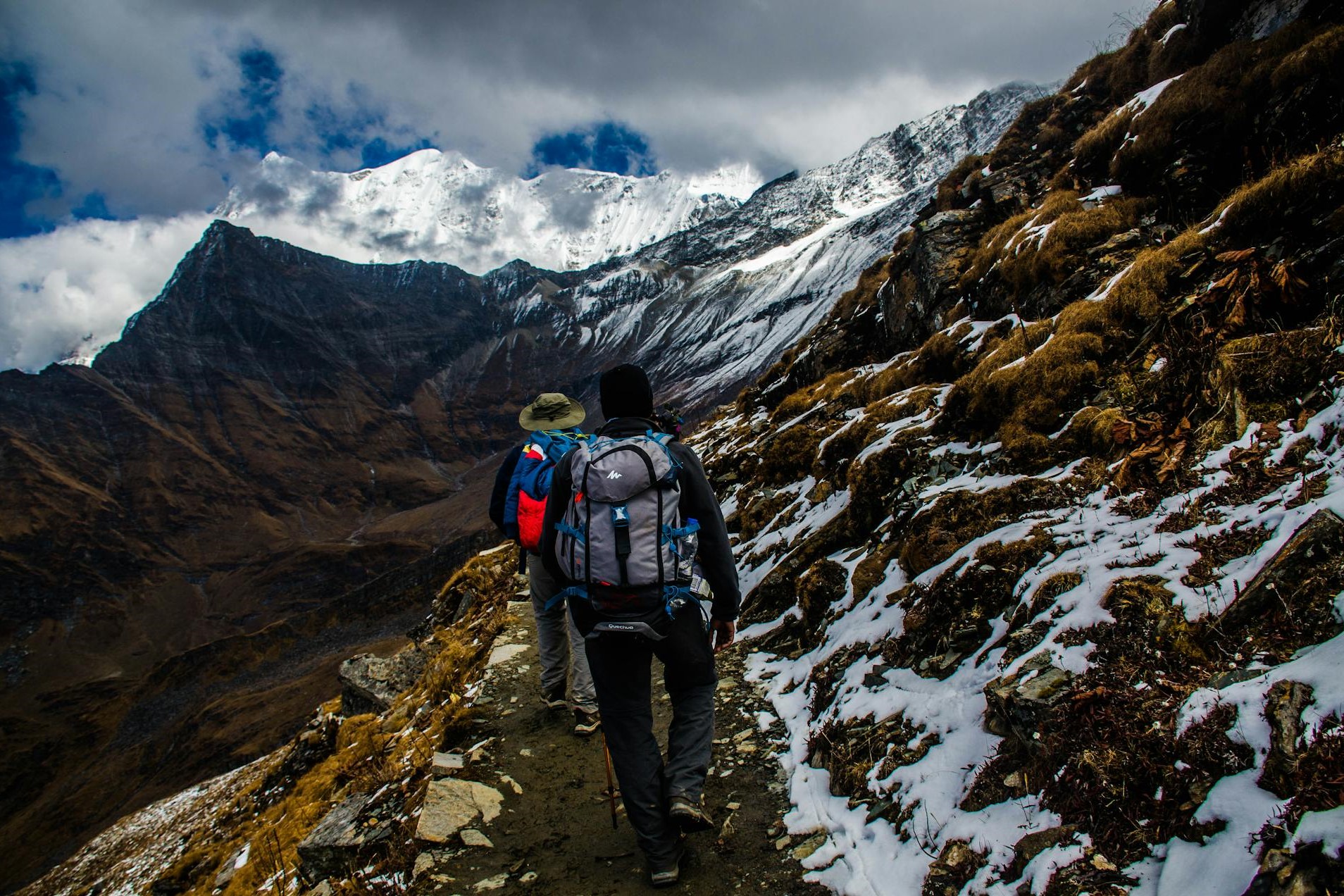When it comes to exploring the outdoors, you might come across three common terms: day hiking, backpacking, and trekking. These activities are all forms of hiking, but they differ in terms of duration, difficulty, required gear, and overall experience. If you’re planning an outdoor adventure and are confused about which one to choose, understanding the key differences between day hiking, backpacking, and trekking can help you make the right decision. In this guide, we’ll break down each of these outdoor activities and explore what sets them apart.
Day Hiking: A Quick Escape into Nature
What is Day Hiking?
Day hiking refers to short outdoor excursions that can be completed in a single day. These hikes typically cover shorter distances and are ideal for beginners, families, or anyone looking to spend a few hours exploring the great outdoors without the need for overnight gear or extended time commitments.
Duration and Distance
Day hikes usually range from a couple of miles to around 12 miles, though the distance can vary depending on the trail. Most day hikes are designed to be easy to moderate in terms of difficulty, and the hike typically lasts anywhere from a couple of hours to a full day. Because day hiking doesn’t require staying overnight, it’s a great option for people with busy schedules or those who are new to hiking.
Gear Requirements
The beauty of day hiking lies in its simplicity. You won’t need a lot of gear. A lightweight backpack with water, snacks, a basic first-aid kit, sunscreen, and an extra layer of clothing is often all you need. The key is to pack light and bring just the essentials. This makes day hiking an accessible option for anyone, regardless of experience level.
Level of Difficulty
Most day hikes are beginner-friendly, although some may be more challenging, depending on the terrain. They are perfect for people who want to experience nature without pushing their physical limits too far. Whether you’re looking for a leisurely walk through a forest or a more strenuous climb to a scenic viewpoint, day hiking offers something for everyone.
Accessibility
Day hikes are typically found near populated areas or in local parks, nature reserves, and mountain ranges. Since they don’t require extensive travel, they’re an excellent option for quick getaways. Many trailheads are easily accessible by car, making day hiking one of the most convenient outdoor activities for those with limited time.
Backpacking: A Deeper Dive into the Wilderness
What is Backpacking?
Backpacking is a more involved form of hiking where you venture into the wilderness for one or more nights, carrying all the necessary gear to camp overnight. Backpacking requires more preparation, endurance, and self-sufficiency compared to day hiking.
Duration and Distance
Backpacking trips typically span from one to several days, and the distances covered can range from 10 to 100 miles, depending on the terrain and your chosen trail. Unlike day hiking, backpacking requires careful planning, especially when it comes to resupply points, campsites, and ensuring you have enough provisions for the entire trip.
Gear Requirements
When you go backpacking, you need to pack much more gear than you would for a day hike. Essential items include a backpack, tent, sleeping bag, cooking equipment, and enough food to last for the duration of your trip. You may also need to bring along specialized gear, depending on the environment, such as rain gear, thermal clothing, and navigation tools like maps or a GPS device.
Backpacking forces you to become more self-sufficient. You will rely on your own skills and knowledge to set up camp, cook your meals, and navigate the trail. This gives you a sense of deeper immersion in nature compared to day hiking.
Level of Difficulty
Backpacking requires a higher level of physical fitness and endurance. You’ll be carrying a heavier load over longer distances, and the terrain may be more difficult, ranging from steep mountain climbs to rocky or uneven paths. Backpacking can be a great way to push your physical and mental limits while enjoying the serenity of the wilderness. Proper conditioning, planning, and preparation are essential for a successful backpacking trip.
Accessibility
Backpacking trails are often located in national parks, forests, or remote wilderness areas. Some trails are easily accessible by car, while others require a longer journey. Backpacking allows you to explore more remote locations, places that day hikers typically can’t reach. It’s about exploring deeper into nature and experiencing a greater sense of isolation.
Trekking: The Ultimate Test of Stamina and Adventure
What is Trekking?
Trekking is a more demanding and extended form of hiking, often involving months of travel through remote regions. While similar to backpacking in that it involves multi-day hikes, trekking typically covers far greater distances, involves more challenging terrains, and requires a higher level of stamina and preparation.
Duration and Distance
Trekking can span anywhere from a few weeks to several months, depending on the route. Treks often cover extensive distances, sometimes thousands of miles, and include a mix of terrains, such as mountains, deserts, jungles, and high-altitude areas. The trekker must be prepared for a physically and mentally demanding experience, as these journeys push endurance to the limit.
Gear Requirements
Trekking involves the most specialized and extensive gear. Along with the essentials like tents, sleeping bags, and food, trekkers may also need altitude gear, such as crampons for ice climbing, trekking poles, and portable oxygen systems for high-altitude environments. Depending on the location, trekkers may also require support from guides, porters, or logistical services.
Level of Difficulty
Trekking is the most physically and mentally demanding of the three activities. It requires exceptional stamina, endurance, and resilience. Trekking often involves remote locations, extreme weather conditions, and high-altitude climbs, which can be a test of both physical and psychological strength. Unlike backpacking, trekking may require overcoming more than just physical fatigue, as it can also challenge your adaptability and problem-solving skills.
Accessibility
Trekking typically takes place in less accessible and more remote locations, such as mountain ranges, deserts, or isolated villages. Popular treks, like the Appalachian Trail or the Everest Base Camp trek, are famous for their beauty and challenging conditions. Due to the long duration and difficulty, trekking often requires meticulous planning, including securing permits, visas, and arranging logistics, such as accommodation or resupply points along the way.
Key Differences Between Day Hiking, Backpacking, and Trekking
Now that we’ve broken down each activity, let’s summarize the key differences:
| Aspect | Day Hiking | Backpacking | Trekking |
|---|---|---|---|
| Duration | A few hours to a full day | 1 day to several days | Weeks or months |
| Distance | Shorter distances (a few miles) | Longer distances (10-100 miles) | Very long distances (1000+ miles) |
| Gear Requirements | Lightweight gear | Tent, sleeping bag, cooking equipment | Specialized gear for extreme terrain |
| Physical Demand | Easy to moderate | Moderate to high | High (requires exceptional stamina) |
| Accessibility | Nearby local parks and trails | National parks and wilderness areas | Remote regions, often requiring permits |
| Difficulty | Beginner to intermediate | Intermediate to advanced | Advanced (requires high endurance) |
| Experience | Casual outdoor experience | Immersive nature experience | Ultimate outdoor adventure |
Which Adventure Is Right for You?
Choosing between day hiking, backpacking, and trekking depends on your goals, experience, fitness level, and the amount of time you can dedicate to your adventure. Here are some tips to help you decide:
- Day Hiking: Ideal for beginners, families, or anyone looking for a short outdoor escape without committing to a long adventure.
- Backpacking: Perfect for intermediate hikers who want to spend a few days in nature, exploring more remote areas and carrying their own gear.
- Trekking: Best suited for experienced adventurers looking for a physical and mental challenge over an extended period. Trekking is for those seeking to push their limits and explore some of the world’s most remote and beautiful destinations.
Conclusion
Whether you’re interested in a simple day hike or are considering an epic trekking expedition, each of these outdoor activities offers unique benefits. Day hikes are perfect for quick getaways, backpacking is great for those looking to immerse themselves in nature for a few days, and trekking is for the ultimate adventurer seeking an endurance challenge. Regardless of which activity you choose, the most important thing is to enjoy the journey and connect with the beauty of the natural world. So, grab your gear and start planning your next adventure!

